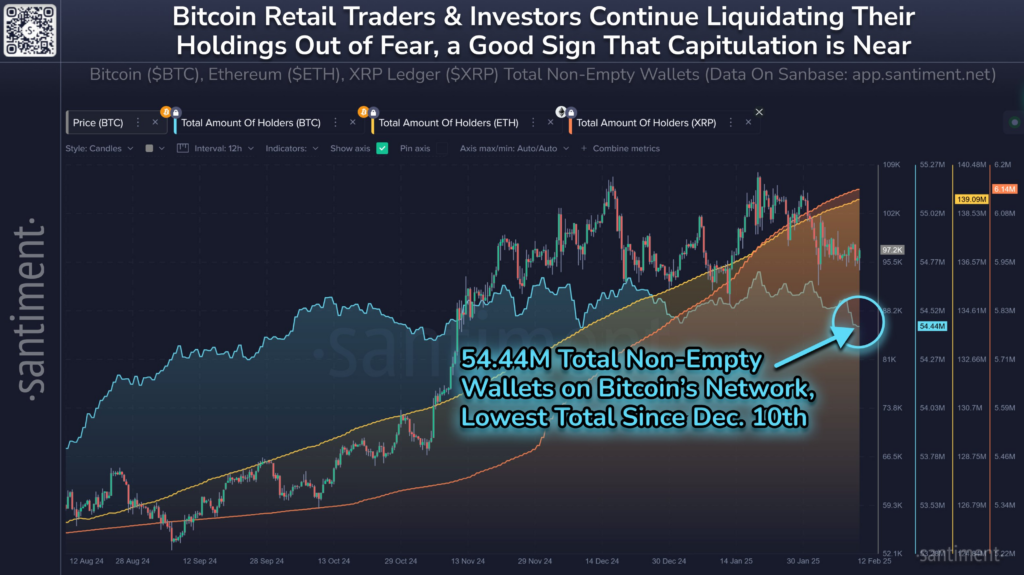- Bitcoin’s non-empty wallets fell to 54.44M, the lowest since December, as small traders exit amid market uncertainty.
- Coinglass data shows over $400M in liquidations, with increased volatility affecting both long and short positions.
- Institutional investors and whales historically accumulate during retail exits, potentially setting up Bitcoin for a future rebound.
Bitcoin’s network has had a notable drop in active wallets, according to Santiment. Over the past three weeks, Bitcoin recorded a decline of 277,240 non empty wallets. This shift contrasts with the increasing wallet activity seen in Ethereum and XRP.
The drop comes from small traders exiting due to market fears. Historically, such retail exits have been the start of accumulation phases for large investors, often preceding strong price moves.
BTC’s Non Empty Wallets Hit a Two Month Low
Bitcoin’s total non empty wallets have fallen to 54.44 million, the lowest since December 10. This decline indicates either funds being consolidated or investors stepping away. A reduction in wallet activity shows lower retail engagement, which may impact short term price trends.

Bitcoin’s price has shown volatility, with downward movements aligning with this reduced wallet activity. After a previous uptrend, the market is now seeing a pullback, resembling past phases when retail investors exited positions. Historical patterns show that such periods of retail capitulation have preceded price rebounds.
Liquidations Indicate Rising Market Volatility
Data from Coinglass shows substantial liquidations, with both long and short positions being affected. The largest liquidation spike occurred in early December, exceeding $400 million. Other liquidation surges were in late January and early February.

Bitcoin’s price is below $100,000, maintaining an overall bullish outlook. However, long liquidations have intensified during corrections, indicating potential sell offs. Short liquidations have led to upward movements, especially during surges in November, December, and January. This shows that leveraged traders are facing forced liquidations due to rapid price shifts.
Retail Panic Creates Buying Opportunities
The decline in retail wallets suggests reduced participation among small holders. Such phases have coincided with whales and sharks increasing their holdings. When retail confidence drops, institutions and whales tend to accumulate assets, often preceding a market recovery.
If Bitcoin maintains key support levels, it could enter a phase of renewed accumulation. Reduced wallet numbers may also contribute to supply constraints in the future, influencing price trends. With increased volatility and institutional interest, the market could see further sharp movements in the future.






